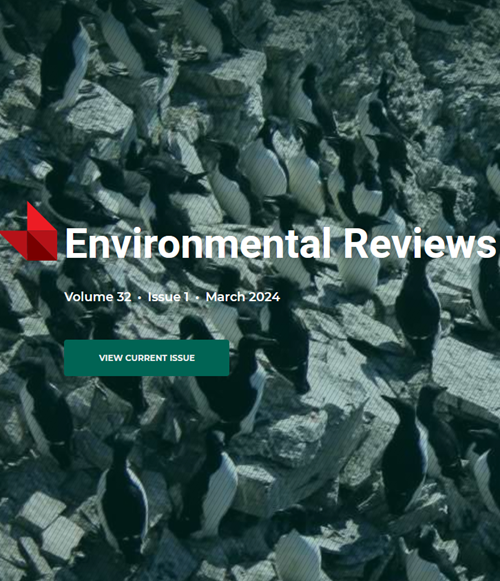Measures to Safeguard and Restore River Connectivity
IF 5.1
3区 环境科学与生态学
Q2 ENVIRONMENTAL SCIENCES
引用次数: 0
Abstract
Freshwater connectivity and the associated flow regime are critical components of the health of freshwater ecosystems. When freshwater ecosystems are fragmented, movements and flows of species, nutrients, sediments, and water are altered, changing the natural dynamics of freshwater ecosystems. The consequences of these changes include declines and loss of freshwater species populations and freshwater ecosystems, and alterations in the delivery of certain ecosystem services, such as fisheries, buffering of flood events, healthy deltas, recreational and cultural values, and others. Measures exist that can maintain and restore connectivity or mitigate against its loss in the face of constructed barriers or other habitat alterations. These measures include system-scale planning for energy and water resources that includes options for limiting loss of freshwater connectivity; putting in place protections for keeping critically important freshwater habitats connected; mitigating impacts on freshwater ecosystems via barrier design, fish passage or implementation of environmental flows; restoring freshwaters via barrier removal and reconnection of rivers, wetlands and floodplains and via active management of groundwater recharge. We present case studies of measures applied in Europe, Asia, Africa and the Americas and reflect on the next generation of innovation needed to further enhance and advance the implementation of restoration and protection and the mitigation of freshwater connectivity impacts.保护和恢复河流连通性的措施
淡水连通性和相关的流态是淡水生态系统健康的关键组成部分。当淡水生态系统支离破碎时,物种、营养物质、沉积物和水的运动和流动就会发生改变,从而改变淡水生态系统的自然动态。这些变化的后果包括淡水物种数量和淡水生态系统的减少和丧失,以及某些生态系统服务的提供方式的改变,如渔业、洪水事件的缓冲、健康的三角洲、娱乐和文化价值等。现有的措施可以维持和恢复连通性,或者在面临建造的屏障或其他栖息地改变时减轻连通性的损失。这些措施包括能源和水资源的系统规模规划,其中包括限制淡水连通性损失的选项;建立保护措施,使至关重要的淡水栖息地保持联系;通过屏障设计、鱼类通道或实施环境流动来减轻对淡水生态系统的影响;通过拆除障碍物和重新连接河流、湿地和泛滥平原以及积极管理地下水补给来恢复淡水。我们介绍了在欧洲、亚洲、非洲和美洲实施的措施的案例研究,并反思了进一步加强和推进恢复和保护以及缓解淡水连通性影响所需的下一代创新。
本文章由计算机程序翻译,如有差异,请以英文原文为准。
求助全文
约1分钟内获得全文
求助全文
来源期刊

Environmental Reviews
环境科学-环境科学
自引率
3.50%
发文量
45
期刊介绍:
Published since 1993, Environmental Reviews is a quarterly journal that presents authoritative literature reviews on a wide range of environmental science and associated environmental studies topics, with emphasis on the effects on and response of both natural and manmade ecosystems to anthropogenic stress. The authorship and scope are international, with critical literature reviews submitted and invited on such topics as sustainability, water supply management, climate change, harvesting impacts, acid rain, pesticide use, lake acidification, air and marine pollution, oil and gas development, biological control, food chain biomagnification, rehabilitation of polluted aquatic systems, erosion, forestry, bio-indicators of environmental stress, conservation of biodiversity, and many other environmental issues.
 求助内容:
求助内容: 应助结果提醒方式:
应助结果提醒方式:


